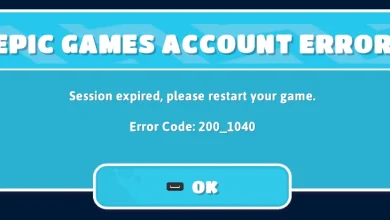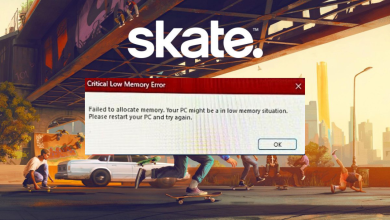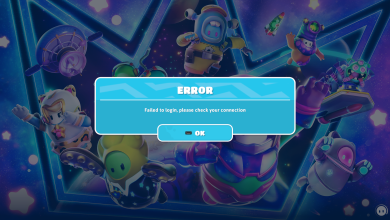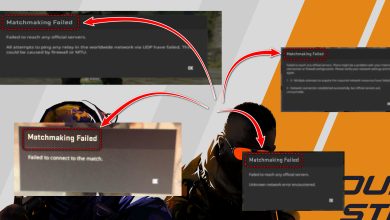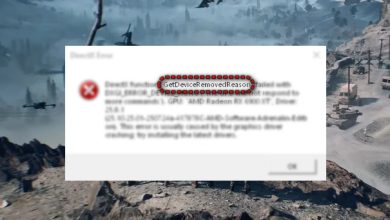How to Fix Marvel Rivals “Out of Video Memory” Error on PC?
The “Out of Video Memory” error in Marvel Rivals isn’t always straightforward. Although the error name suggests a lack of video memory, it can stem from various factors, including common culprits such as insufficient RAM, outdated or faulty drivers, and surprisingly, an outdated BIOS on Intel 13th and 14th-generation motherboards. If you’re tech-savvy, you can match the best solution to your PC specs or follow the steps below one by one to tweak settings and find the exact solution for the Marvel Rivals error, as all methods have been proven to work.
If you’re tech-savvy, you can match the best solution to your PC specs or follow the steps below one by one to tweak settings and find the exact solution for the Marvel Rivals error, as all methods have been proven to work.
Before You Start: Ensure Your PC Meets Marvel Rivals’ Minimum Specs:
| Component | Minimum Requirement |
|---|---|
| OS | Windows 10 64-bit or newer |
| CPU | Intel Core i5-6600k / AMD Ryzen 5 1600X |
| Memory | 16 GB |
| GPU | Nvidia GeForce RTX 1060 / AMD RX 580 / Intel Arc A380 |
| DirectX | Version 12 |
| Storage | 70 GB available free Disk Space |
1. Lower Graphics Settings and Disable Overlays
Another temporary fix is to lower the graphics settings, which frees up system resources and reduces the load on your GPU and CPU. Reducing texture quality and capping the frame rate at 60fps gives your system more room to handle other tasks and reduces the chance of crashes while playing games.
Additionally, overlays from apps like Steam and Discord can interfere with the Unreal Engine, causing performance issues. These overlays use up system resources, which can lead to crashes or poor performance. Disabling these overlays can improve stability and prevent conflicts with the game engine.
Lower Graphics Settings in Game:
For NVIDIA users, use the NVIDIA app to adjust settings, or manually disable these settings in the game for other users.
- Open the NVIDIA App from the tray icon. If you don’t have it, visit the NVIDIA App official website and download it.
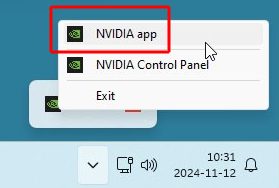
- After downloading and installing, launch it.
- Go to the Graphic Settings and find your game.
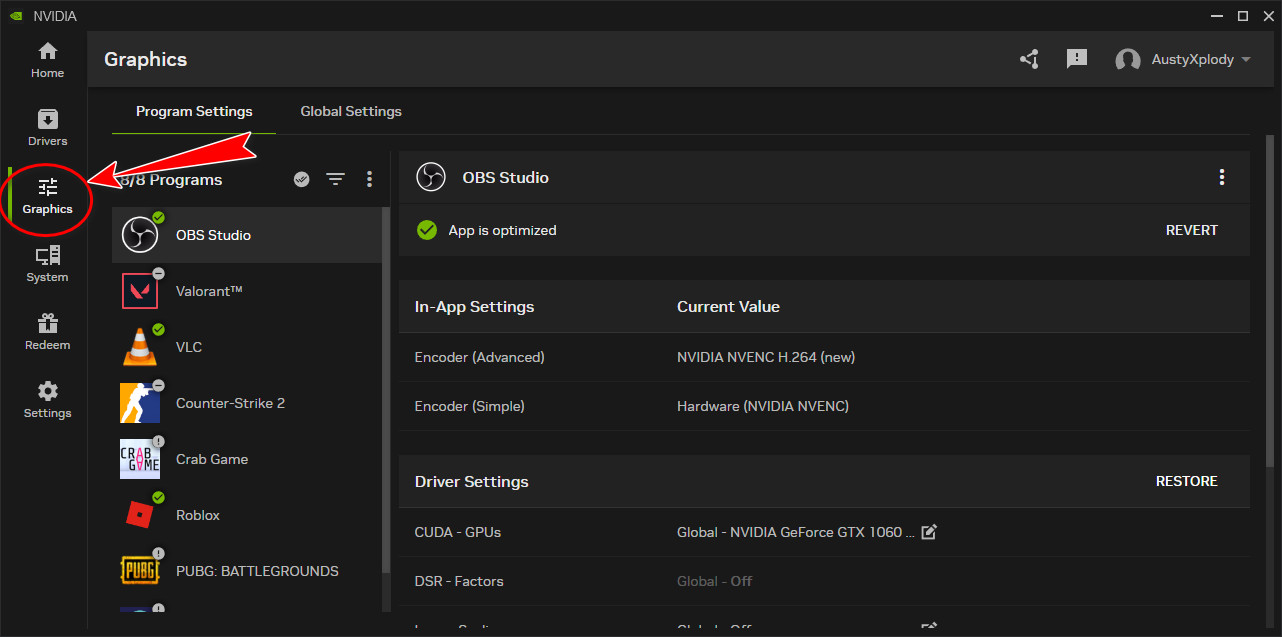
- Drag the Optimizer to the left to lower the quality as much as possible.
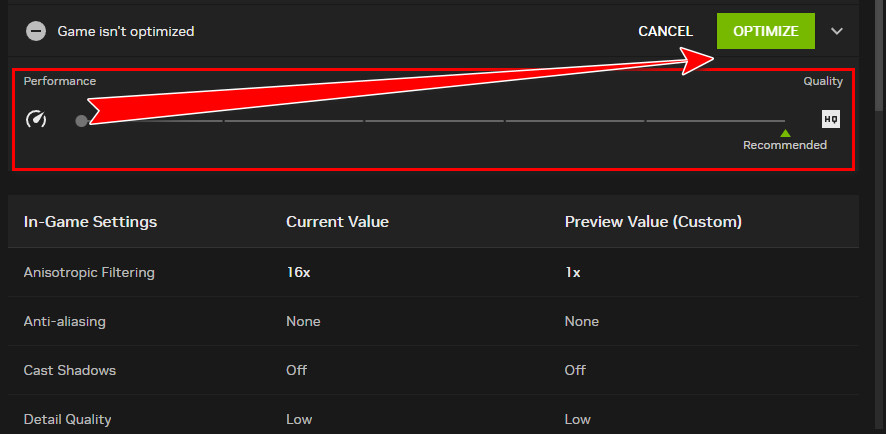
Drag toward performance and click on Update/Optimize.
Disabling Overlays Such as Discord and Steam:
- Open Steam and go to Settings.
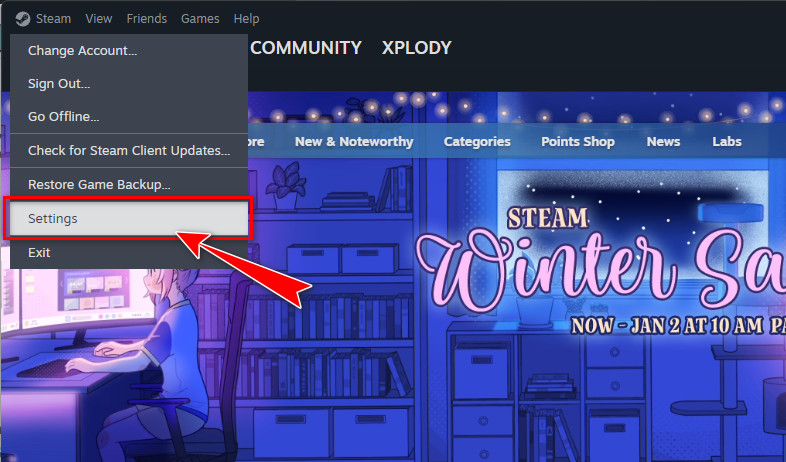
- Click on the In-Game tab.
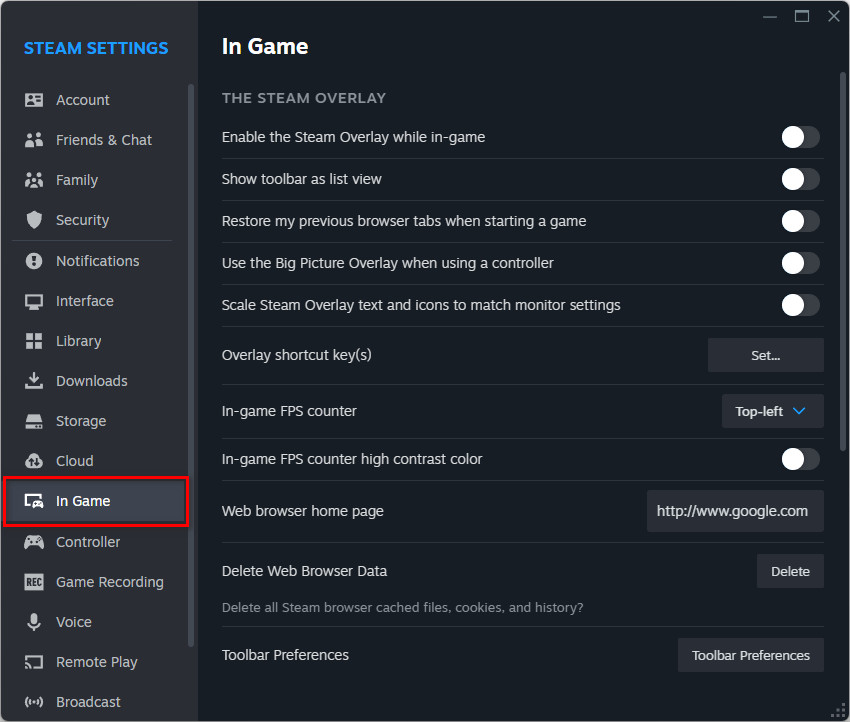
- Uncheck the box next to Enable the Steam Overlay while in-game.
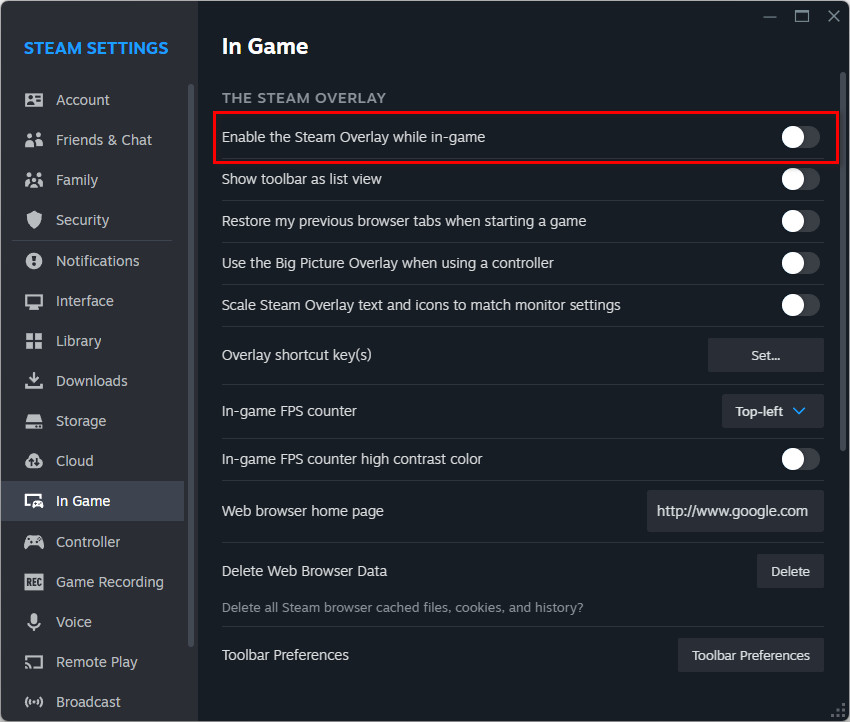
- Click OK to save.
Disable Discord Overlay:
- Open Discord and go to Settings (the gear icon).
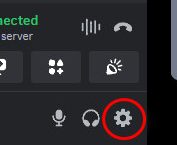
- Under App Settings, Look for Activity Settings then Game Overlay.
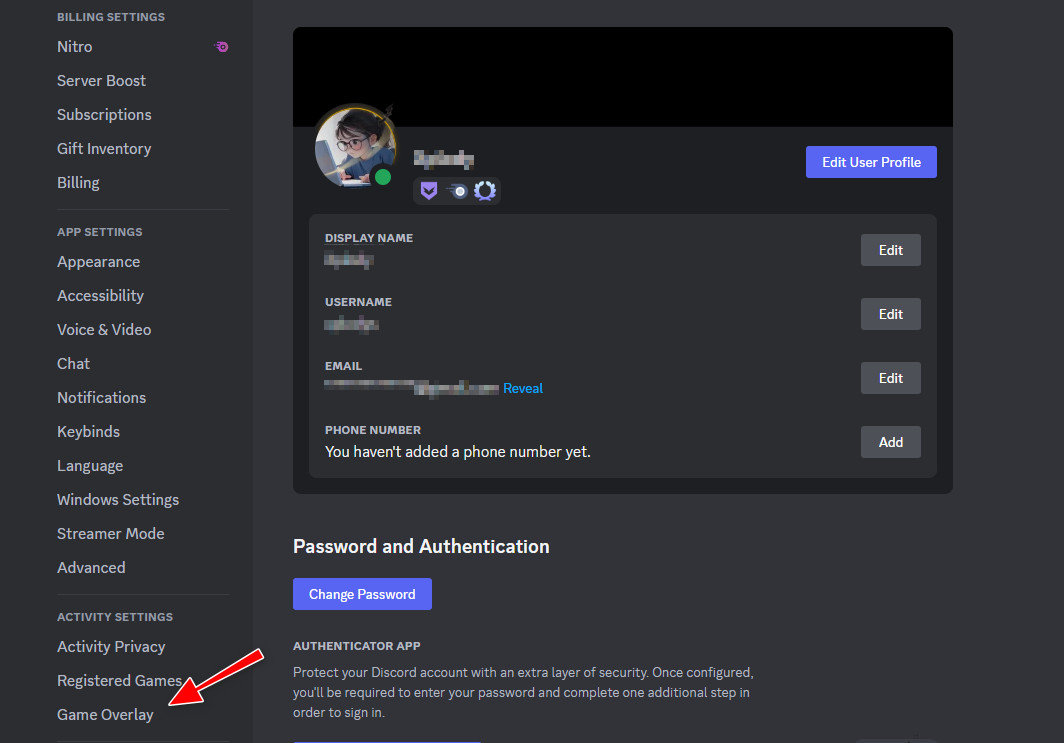
- Toggle off the option for Enable in-game overlay.
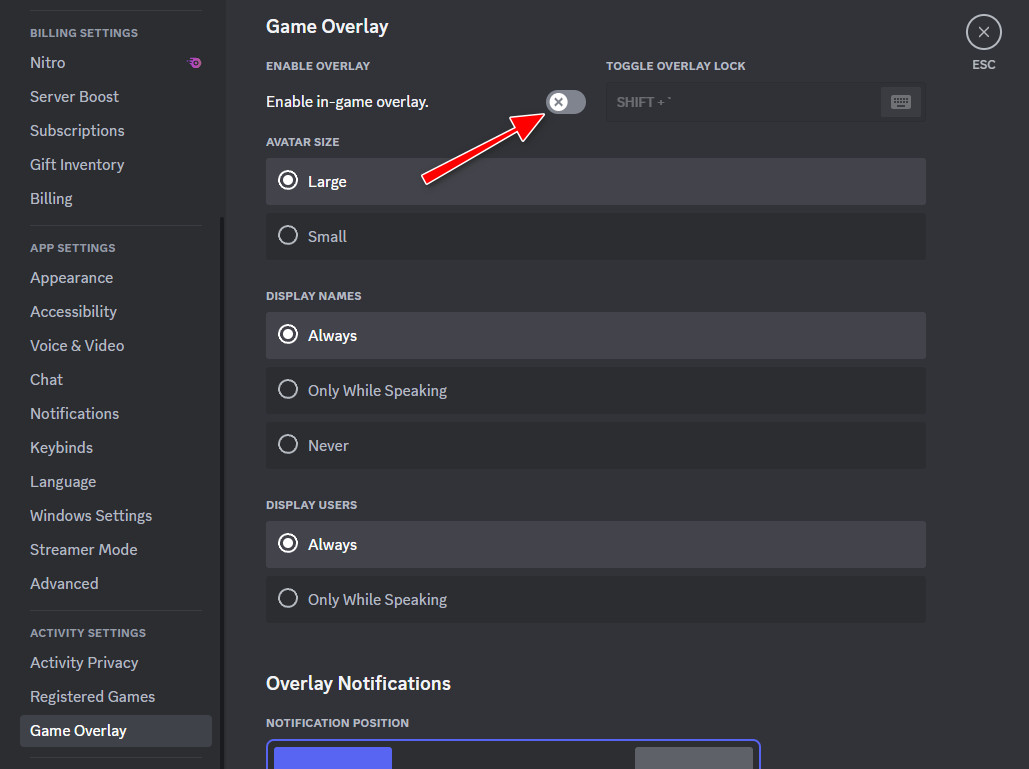
- Close the settings to apply the changes.
2. Update your Graphics Drivers:
Graphics drivers serve as the bridge between your operating system and the GPU hardware, translating software instructions into hardware operations. As games like Marvel Rivals evolve with patches and optimizations, outdated drivers may lack the necessary instructions for these updates, leading to errors such as ‘Out of Video Memory.’
To fix this, update your graphics drivers to avoid any compatibility issues causing the Marvel Rivals “Out of Video Memory” error.
- Go to the NVIDIA/AMD website and download the latest drivers for your GPU.
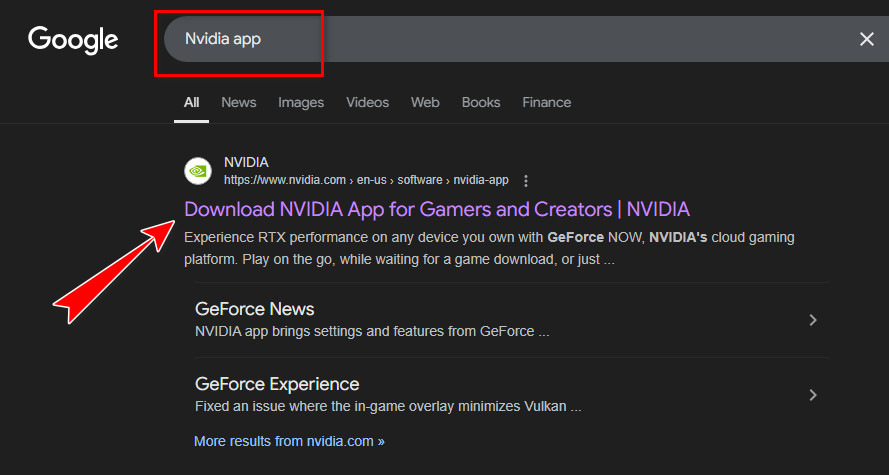
- Install the drivers.
Once everything is done correctly, restart your computer to ensure everything is installed properly.
3. Update BIOS and Drivers (especially for Intel 13th & 14th Gen)
Ensure your BIOS and drivers are up to date. This is critical, especially if you’re using an Intel 14th generation CPU, as updating their BIOS to the latest version along with your graphics drivers ensures can resolve this issue.
- Click on the Windows icon and search for System Information.
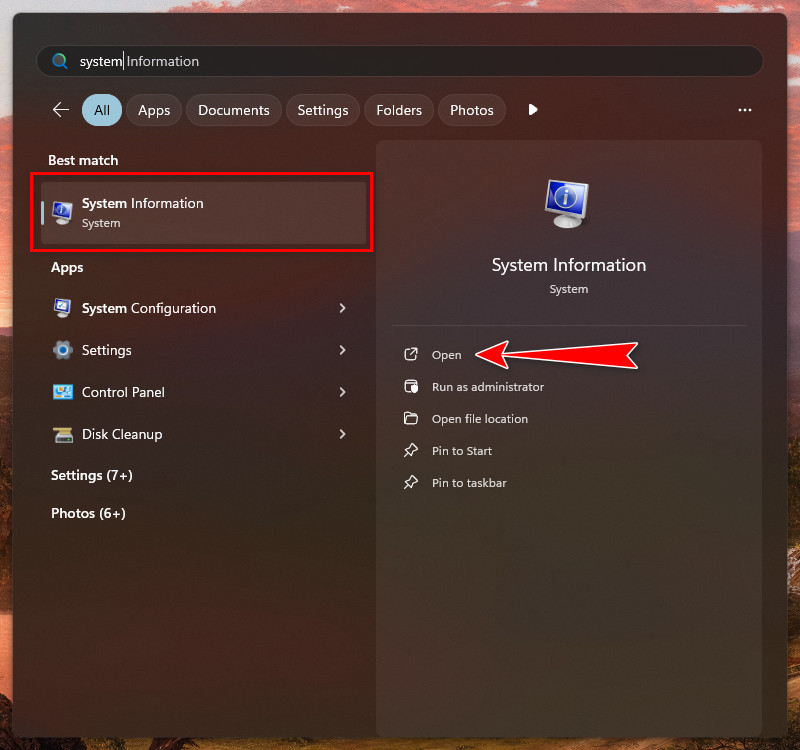
- Look for Baseboard Product in the details.

- Copy the baseboard product name and search for it on Google. For example, suppose I have an MSI MPG Z790 Carbon WiFi motherboard.
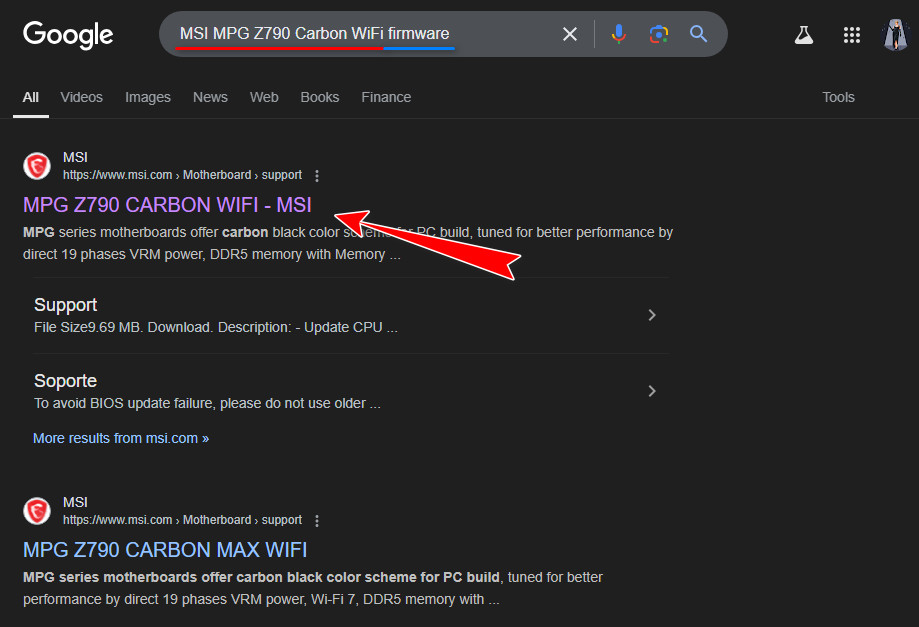
- Visit the official manufacturer’s website to find the latest firmware (BIOS) or driver updates for your motherboard.
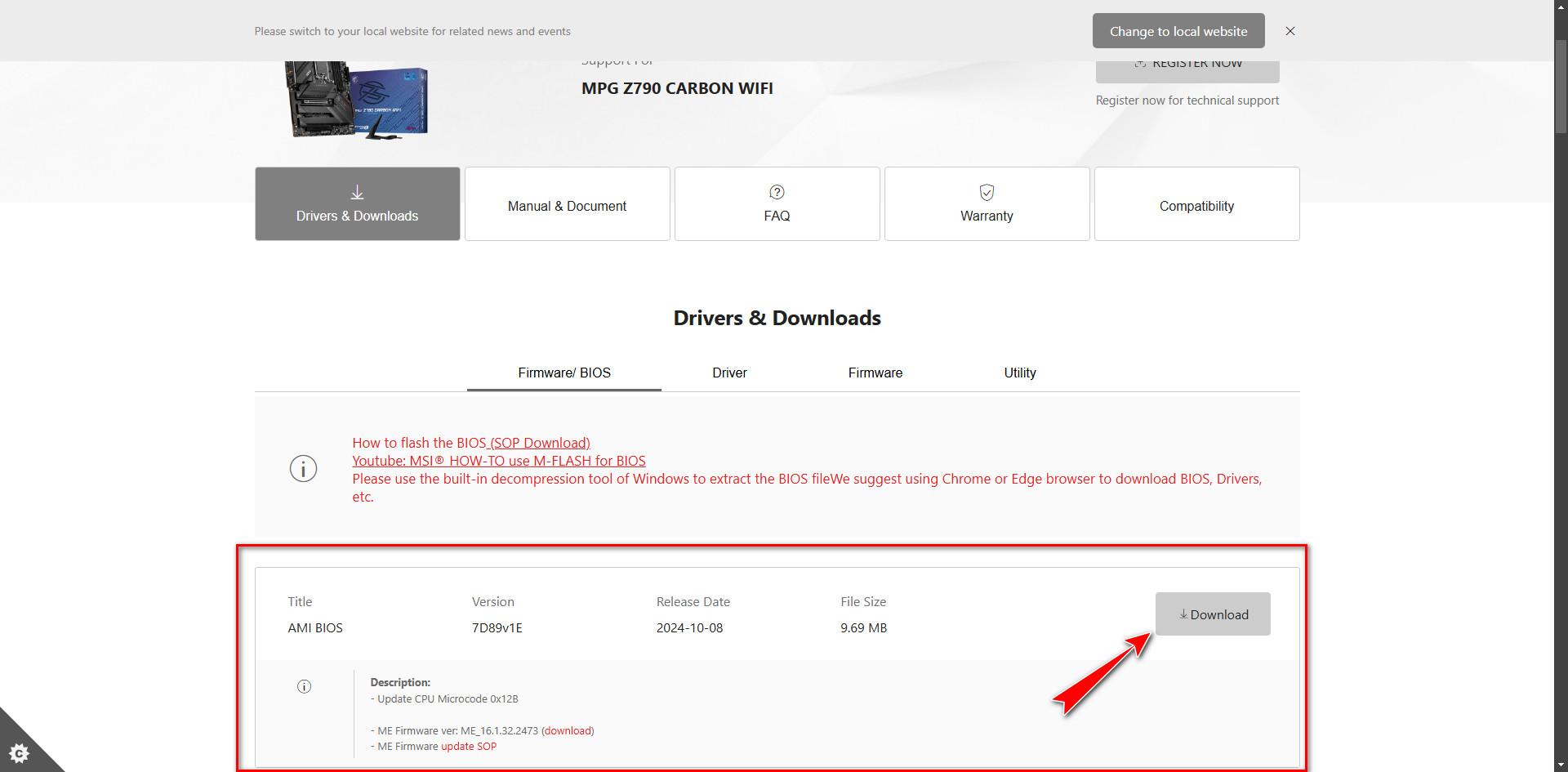
- Manufacturers like MSI often include video guides on their websites or YouTube channels.
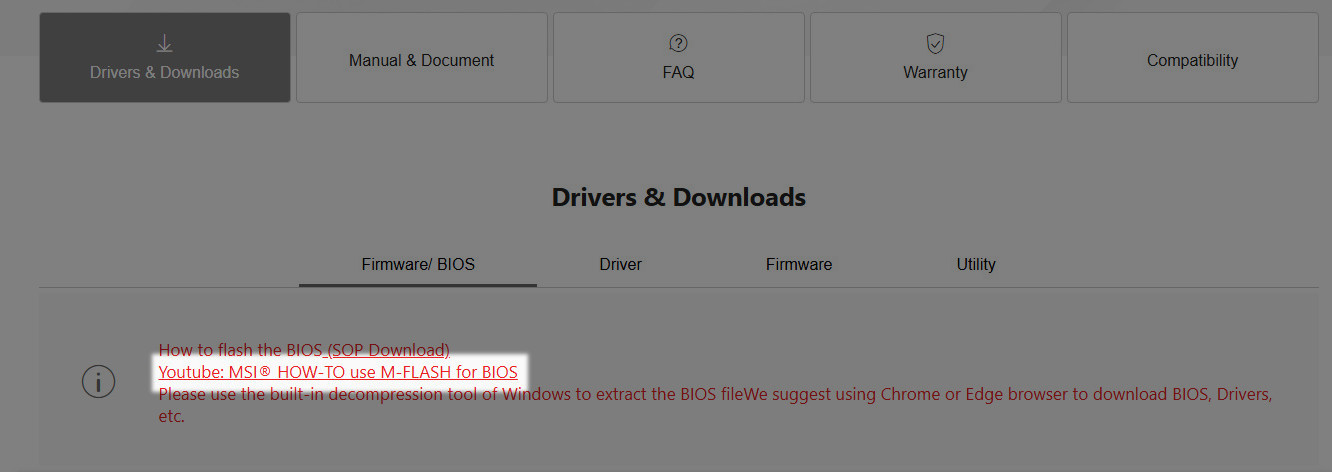
- Check these videos if you need a step-by-step guide on updating the BIOS or drivers.
4. Adjust Performance Core Ratio (for Intel 14th Gen CPUs Only)
This method is an alternative as Intel made some changes to their 14th Gen CPU that caused instability, which was later fixed through a BIOS update. However, if you feel uncomfortable with the BIOS, you can follow this step. It doesn’t significantly affect performance, but it does help improve stability by reducing system load.
- Download and install the Intel Extreme Tuning Utility (XTU).
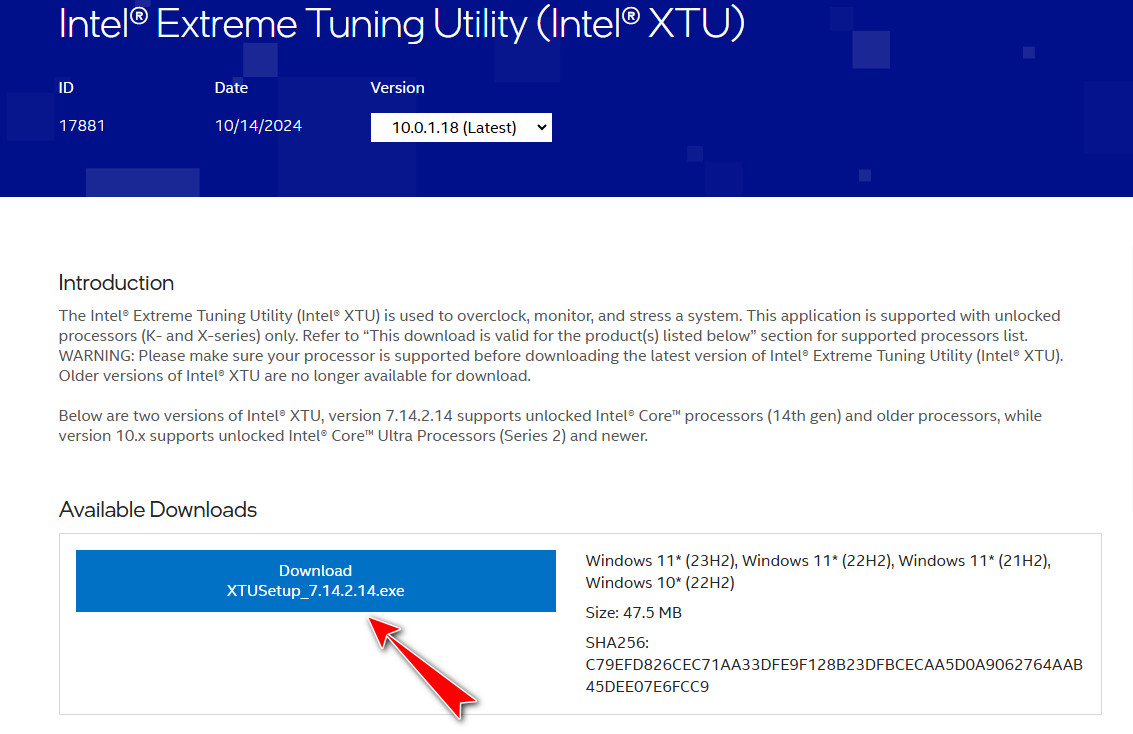
- Open the software.
- Locate the performance Core Ratio settings.
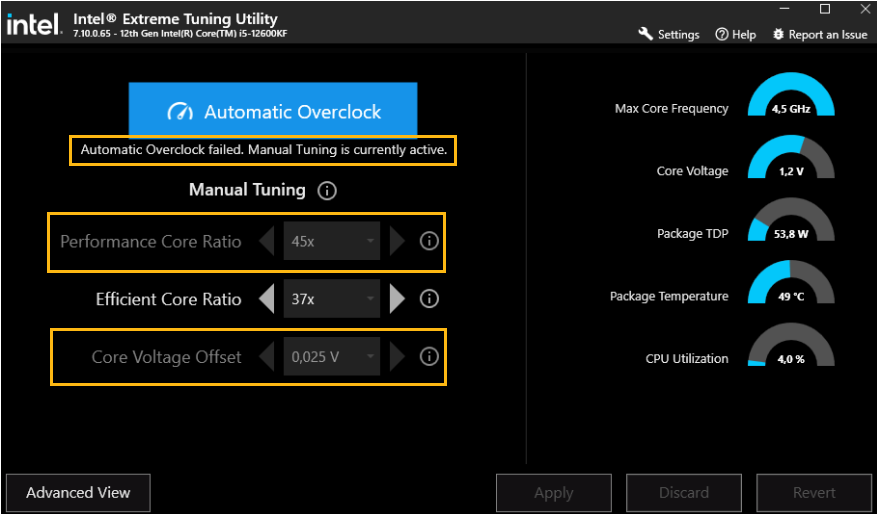
- Lower it by one (e.g., from 55x to 54x).
This reduces stress on the system and helps resolve the error.
Disable Virtualization Based Security (VBS):
If you face issues while optimizing, you can disable Virtualization Based Security using CMD. Keep in mind that disabling VBS can affect certain security features, so ensure you understand the implications before making this change.
- Run CMD as Administrator.
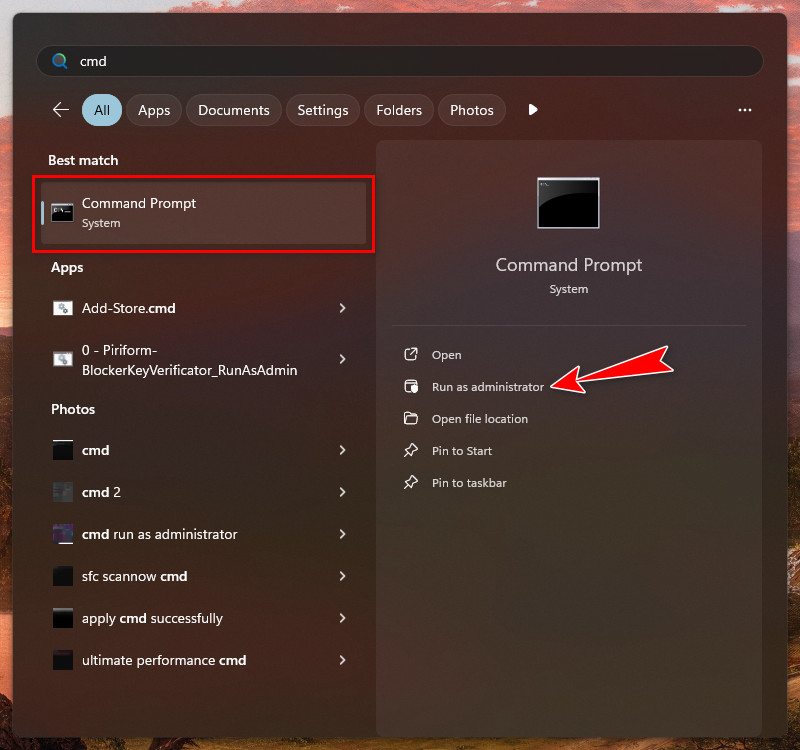
- Type the following command to disable it.

bcdedit /set hypervisorlaunchtype off
This command will disable the hypervisor, which is responsible for VBS.
To re-enable it, you can apply the following command in CMD.
bcdedit /set hypervisorlaunchtype auto
5. Disable Full Screen Optimizations & Enable Run as Administrator
Full Screen Optimizations is a feature designed to improve the gaming experience by increasing the performance of games running in full-screen mode. However, this feature can sometimes introduce input lag or framerate drops, particularly in systems with older hardware or specific graphics drivers. Disabling Full Screen Optimizations can often enhance the stability and responsiveness of a game.
While enabling ‘Run as Administrator’ helps resolve issues like game crashes or features not working due to permission restrictions. It ensures full interaction with system components, preventing disruptions
- Find the Shortcut icon for the game on your desktop or in the Start menu.
- Right-click on the game shortcut icon and select Properties.
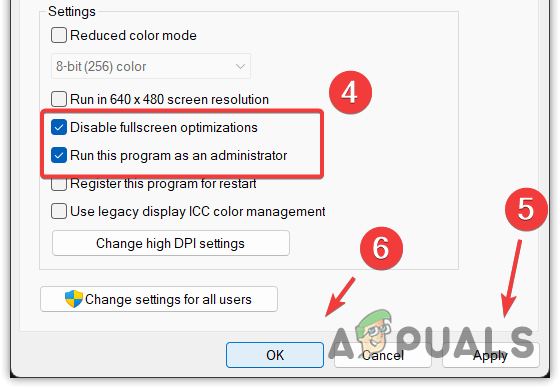
Copy these settings, but instead of Windows 7, use Windows 8, which is more compatible. - In the Properties window, go to the Compatibility tab.
- Check both Disable Fullscreen Optimizations & Run this Program as and Administrator.
6. Increase Virtual Memory (VRAM)
Increasing virtual memory is a common and solid solution, especially for low-end PCs. Increasing virtual memory can resolve issues like Low Memory errors in games or programs, allowing Windows to use more of your hard drive as additional RAM.
- Press Windows + R to open the Run dialog box.
- Type
sysdm.cpland press Enter.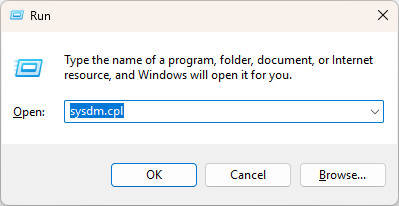
- Under the Performance section, click on Settings.
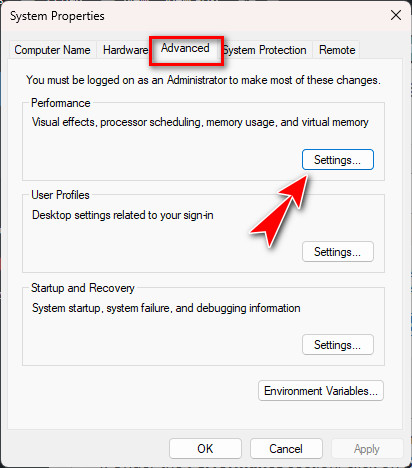
- In the Performance Options window, go to the Advanced tab.
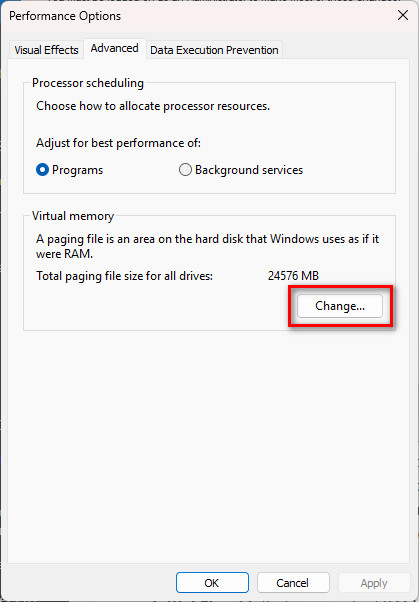
- Under the Virtual Memory section, click on Change button.
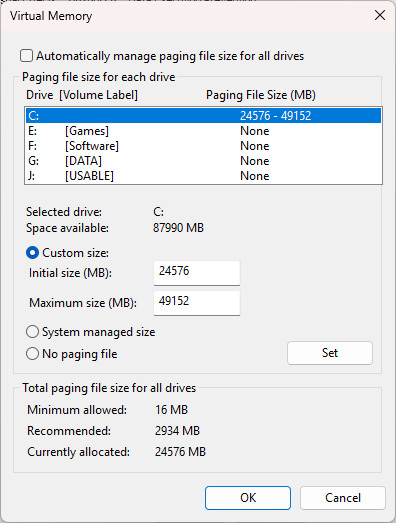
- Uncheck the box for Automatically manage paging file size for all drives.
- Select the drive where Windows is installed (usually C:).
- Choose Custom Size and set the values:
-
- Initial Size: Multiply your actual RAM size (in GB) by 1024 to convert it to MB.
- Multiply the result by 1.5 to get the Initial Size.
- Example: For 16GB RAM,
16 x 1024 = 16384 MB
16384 x 1.5 = 24576 MB
So, the Initial Size is 24576 MB. - Maximum Size: Multiply your actual RAM size (in GB) by 1024 to convert it to MB.
Multiply the result by 3 to get the Maximum Size.
Example: For 16GB RAM,
16 x 1024 = 16384 MB
16384 x 3 = 49152 MB
So, the Maximum Size is 49152 MB.
Always set the Initial Size and Maximum Size to these calculated values to ensure stability in performance and avoid errors.
Once everything is done, click on Set, then Apply, and restart your PC to make sure the changes take effect.
That’s it! By following these methods, you can not only solve your issues but also boost your PC’s performance, especially for low or mid-range PCs. If you have any questions or need help, visit Appuals.com. Good luck!
